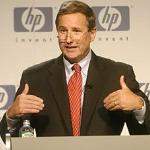How HP's PR Gurus Bumbled the Hurd Scandal
 The firing of HP CEO Mark Hurd after sexual harassment claims remains murky, but in terms of PR and crisis management, his dismissal was a mess.
The firing of HP CEO Mark Hurd after sexual harassment claims remains murky, but in terms of PR and crisis management, his dismissal was a mess.
Weeks after the event, the situation surrounding the firing of HP’s CEO, Mark Hurd, remains murky. A string of news reports and commentaries concerning HP’s actions have kept the matter alive. Some curiosity stems from the titillating nature of Hurd’s alleged misdeeds (sexual misconduct of some sort and inaccurate expense reports), but serious observers are more troubled by the way the story unfolded, about how and why the company’s directors acted when they did, and by the quality of the advice they relied upon in making their decision.
Chris O’Brien, columnist for the San Jose Mercury News, recently posed three crucial questions about Hurd’s undoing. They are worth repeating in some detail here:
- What was the nature of Hurd's relationship with (marketing consultant Jodie) Fisher? The other supposed misdeeds stem from this one key issue. All sides say there was no sex and no affair. And yet HP said Hurd's relationship with Fisher crossed a line into territory that required him to disclose it to the company. It remains unclear where the company drew that line.
- Did HP complete its investigation into Fisher's sexual harassment claims? Initially, HP said it investigated and found they weren't true. But then came a leak to The Wall Street Journal from "a person familiar with the board's thinking," indicating that a settlement struck between Hurd and Fisher over her claims, which included a confidentiality agreement, "short-circuit(ed) the board's investigation."
- Did the HP board know about Hurd's settlement talks with Fisher? HP has never addressed this issue, but it seems almost impossible to believe that Hurd was negotiating a settlement with Fisher without the board's approval. Still, the same Journal story claimed the deal was made without the board's "input or knowledge."
If Hurd did something to scuttle an ongoing investigation, the board had every right to demand he leave. If that really happened, however, the board must explain why it originally misled the public by stating it had completed the investigation.
A source familiar with the case disputes that, saying HP attorneys knew and encouraged Hurd to settle….
To my knowledge, O’Brien’s questions have not yet been answered by HP.
And that leads to what might be one of the most important lessons to be learned from this episode: The first rule of responsible and effective crisis management is to gather as many of the facts as is absolutely possible before acting…or talking!
The second rule of crisis management is: Don’t do or say anything that runs the risk of making things worse. The corollary to this rule is: When you find yourself in a hole, quit digging. Again, it appears that the HP Board and its advisers failed that test, as well.
Instead of taking and reporting actions that provided reassurance to employees, shareholders and customers alike, HP’s corporate governors have managed only to raise more questions than they have answered.
In the meantime, it is worth pondering another aspect of the story. One can’t help but be troubled by what we’ve learned about some of the advice given to the HP Directors by their public relations consultants. According to a report in The New York Times, the consultants, “…even wrote a mock sensational newspaper article to demonstrate what would happen if news leaked. The specialist said the company would be better served by full disclosure, even though an investigation had produced no evidence of sexual misconduct.” (emphasis added).
Well, as it turns out, the “full disclosure” may not have been so full, after all. And, a significant disservice to both Mr. Hurd and a female colleague may have resulted from this not-so-minor detail. A seemingly cavalier attitude toward facts shouldn’t be part of any crisis manager’s playbook.
The NYT also reported that HP’s advisors, “cited recent sexual imbroglios like the one that diminished Tiger Woods. The specialist cautioned that only 20 percent of top executives survive these types of allegations and then they usually end up leaving because of the weight of negative publicity.”
Not meaning to be overly picky, but Tiger Woods’ problems were of a much different type and magnitude than those attributed---erroneously, as it now appears---to Mr. Hurd. Moreover, assuming for the sake of argument that the claim that “only 20 percent of top executives survive these types of allegations” is accurate, isn’t that fact---that one out of five make it---worth at least some consideration? Apparently not, according to the consultant and HP’s Directors.
We do not yet know---and may never know---the full story of Mark Hurd’s undoing. We certainly don’t know everything about the motivations of the HP Directors who voted to dismiss him as CEO, or of others involved in the situation.
But one thing is absolutely clear: As a case study in crisis management and crisis communications, the dismissal of Mark Hurd left a lot to be desired. It also produced a number of lessons worth learning, and worth remembering.